ASUS Republic Of Gamers Maximus VI Hero Intel Z87 Motherboard Review
ASUS ROG Maximus VI Hero Intel Z87 Motherboard Features
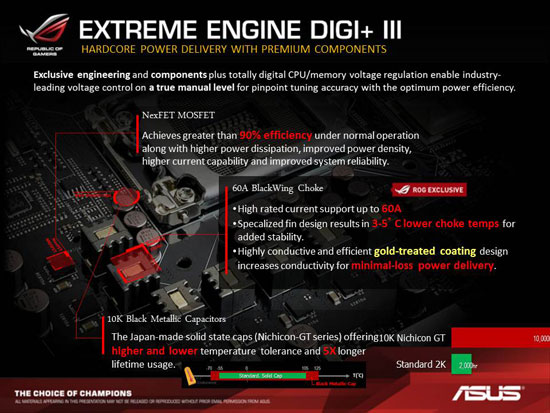
The Extreme Engine DIGI+ III is comprised of NexFET MOSFET, these are capable of more than 90% efficiency under normal operating conditions. In addition to the greater than 90% efficiency they are also capable of higher power dissipation, improved power density, higher current capability which when all this is combined creates improved system reliability. The chokes on the ASUS Maximus VI Hero are rated to support as much as 60 Amps and offer 3-5 degrees Celsius lower temps. The gold-treated coating increases the conductivity and reduces the power delivery loss. The capacitors on the ASUS Hero are rated for 10k hours and are Japanese made solid Caps (Nichicon-GT series) which offer hgher and lower temperature tolerances and last five times longer than traditional Caps.
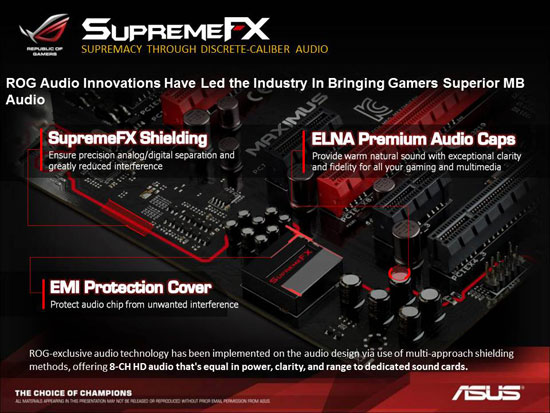
When it comes to gaming, the audio performance can be just as important as the graphics performance, and ASUS knows this! On the Republic of Gamers motherboards ASUS has implemented the SupremeFX audio design and provided the tag line ‘Supremace Through Discrete-Caliber Audio’. There is a lot of technology that goes into the SupremeFX audio so lets take a look.
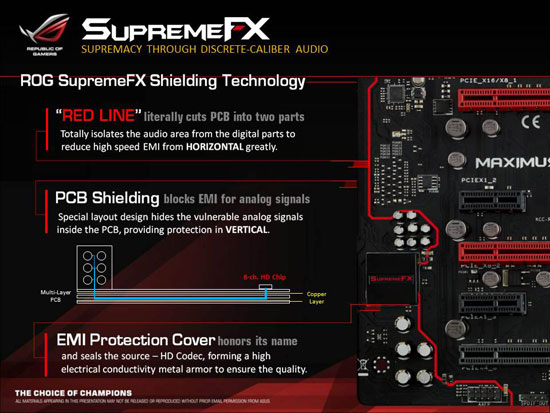
In order to minimize the electrical interference from the rest of the ASUS ROG Maximus VI Hero motherboard, the entire audio portion of the PCB is separated by the ASUS ‘Red Line’. This drastically cuts back on the EMI on the horizontal plane. To cut back on the EMI from the vertical plane ASUS has used a special layout design that hides the vulnerable analog signals in the PCB providing protection. On the surface of the PCB the Realtek ALC1150 High Definition Audio codec is protected by an EMI Protection Cover which protects the source from EMI.
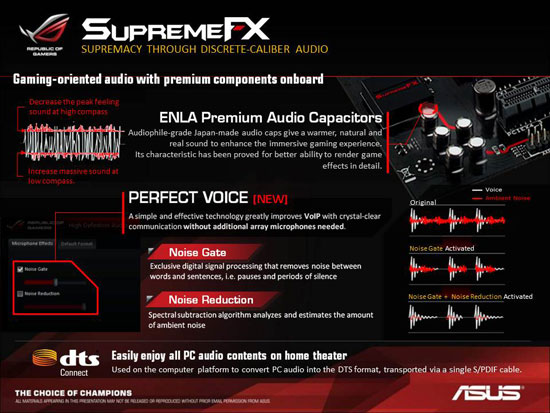
The SupremeFX audio uses ENLA Premium Audio Capacitors that give a warmer, natural and truer sound to enhance the gaming experience. In addition to the Sonic Radar the ASUS Maximus VI Hero also offers Perfect Voice that will improve the quality of VoIP applications like Team Speed and Ventrillo as well as the in game chat systems. It offers Noise Gate technology that is an exclusive digital signal processing system that will eliminate the static when you stop talking. Perfect Voice also offers noise reduction, this is done with a Spectral Subtraction Algorithm that will analyze and estimate the amount of ambient noise and aide in reducing it.

Sonic Radar seemed a little cheesy to me at first, but after a few hours playing with it enabled. I’m not sure how I’ll go back to gaming without it (must be time for an upgrade). Sonic Radar picks up the direction of the various in game sounds, whether you’re looking for the gunfire, foot steps to know if someone is coming up behind you it comes in handy. Be warned, you will catch yourself watching it and not the game more than a few times.
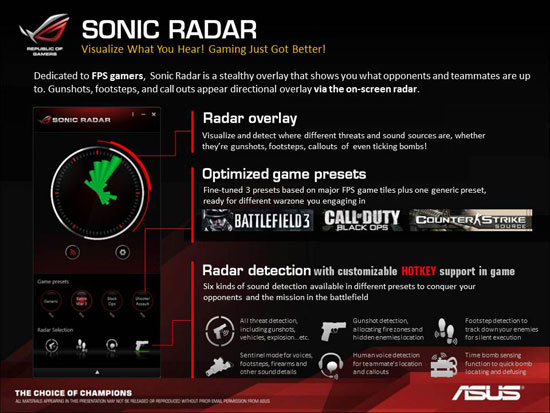
The Sonic Radar has a couple of different presets and various modes that already come set-up, and you can customize it to fit your needs.
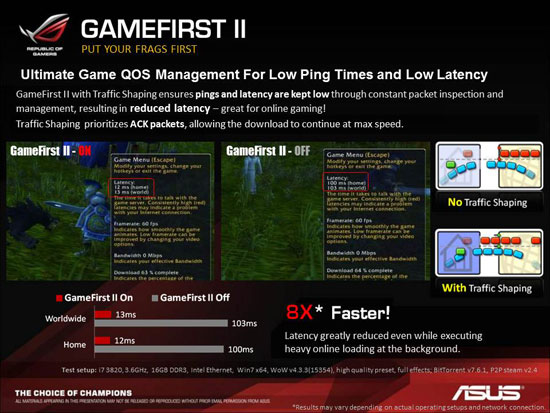
The Gamefirst II can help ensure pings and latency are kept low by managing your network trafic. Whether you’re downloading, streaming music, or other various tasks Gamefirst II monitors your traffic and prioritizes it.
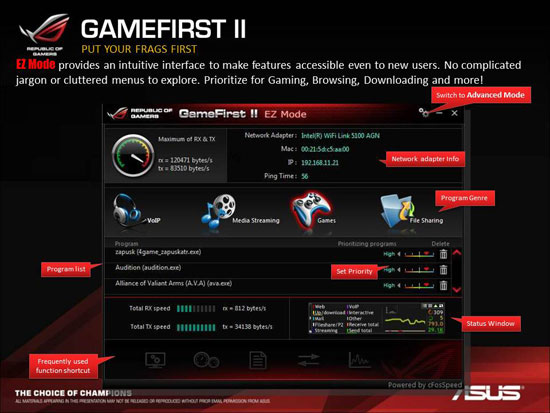
Gamefirst has two different settings, EZ Mode, and Advanced mode. Above we can see that the EZ mode is pretty simple and easy to figure out. It’s meant for those new to this type of application.
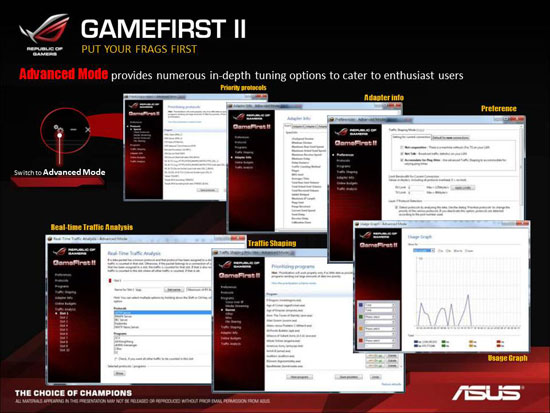
The advanced mode is quite a bit more complex, though it offers much more in terms of options and capabilities. One of the best aspects of the GameFirst II system is that it isn’t tied to the Intel NIC, if you were to add a PCIe WiFi card like the ASUS PCE-AC66 PCIe card or USB Wi-Fi adapter like the ASUS USB-AC53 Dual-Band Wi-Fi USB adapter you would still be able to take advantage of the GameFirst II system
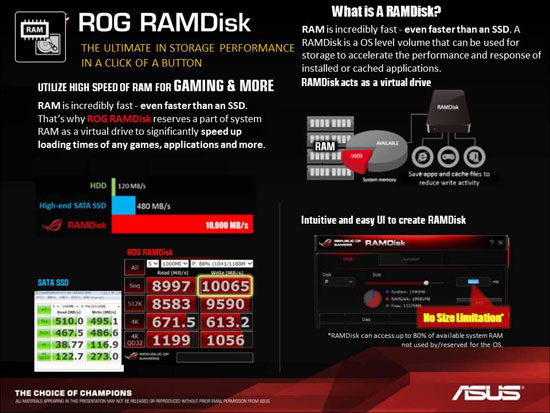
Within the software that comes with the ASUS Maximus VI Hero is a RAMDisk application. This isn’t a trial piece of software, it allows for an unlimited amount of your RAM to be used to form a virtual disk. Utilizing the RAM for a virtual disk creates an incredibly fast disk, faster than any SSD out there.
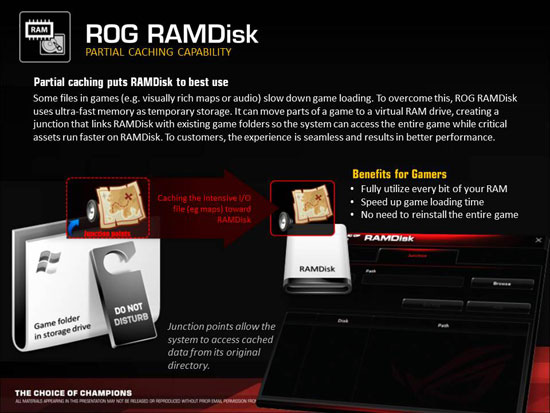
The ASUS Software allows you to set junction points, these will back-up the cached data on the RAMDisk and next time you boot the system the DATA will be returned to the RAMDisk.
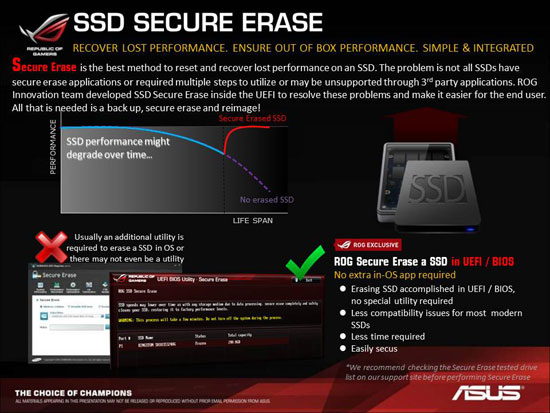
Many SSD’s come with some sort of secure erase software, some don’t. ASUS has given this ability to their UEFI BIOS, now we don’t have to rely on third party software from your SSD manufacturer or others to get the job done, we can do it right from the UEFI BIOS.
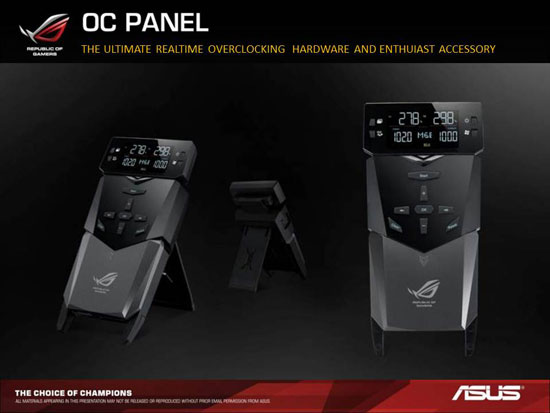
The ASUS ROG boards have a new overclocking companion, the OC Panel. This will allow real time overclocking from a hardware based perspective from within your operating system.
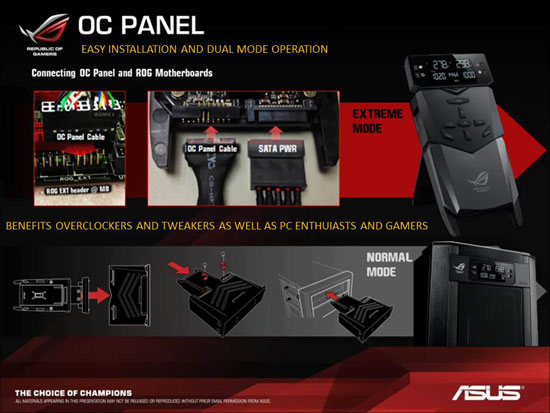
The OC Panel has two different modes, Extreme mode, and normal mode.
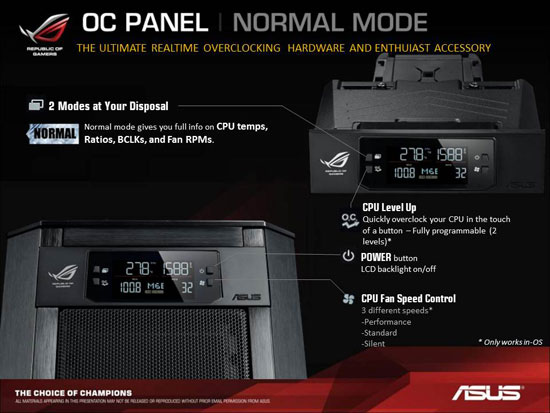
Normal mode allows a basic CPU Level Up with two different levels that are programmable, as well as a power button to turn the LCD backlight on or off, and last but not least a CPU fan speed control that offers 3 different speeds; Performance, Standard, and silent.
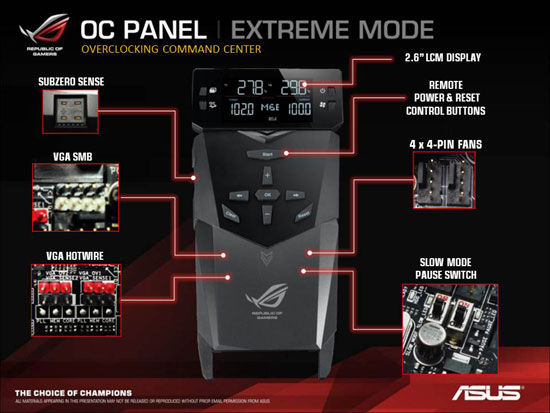
The Extreme mode is infinitely more capable, it has sub-zero sense, VGA SMB, power and reset control buttons,, 4x4pin fand headers, Slow Mode/Pause switch control, and VGA Hotwire. If you’re into extreme overclocking with Liquid Nitrogen (LN2) or even Liquid Helium, the Subzero sense is a pretty slick feature. Subzero sense is a built in monitoring system to monitor the system temperatures with KProbes that you would typically use while overclocking. VGA Hotwire is also a slick system. Here we can directly wire our supported graphics card to the motherboard and monitor the voltages as well as adjust the voltages through the OC Panel!
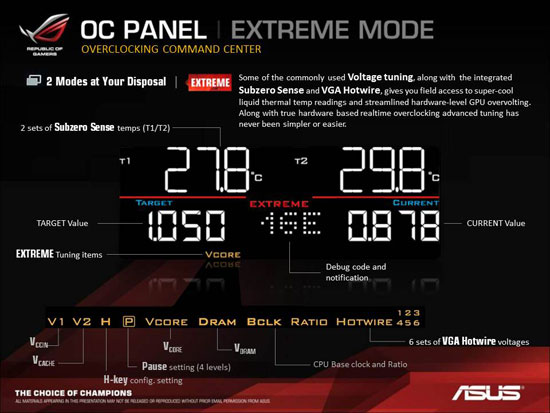
The display on the OC Panel has two different temperature sensors, Voltage Readings, Debug code and notification, and six sets of VGA hotwire voltages. A very impressive tool for those looking to do some extreme overclocking.

Comments are closed.